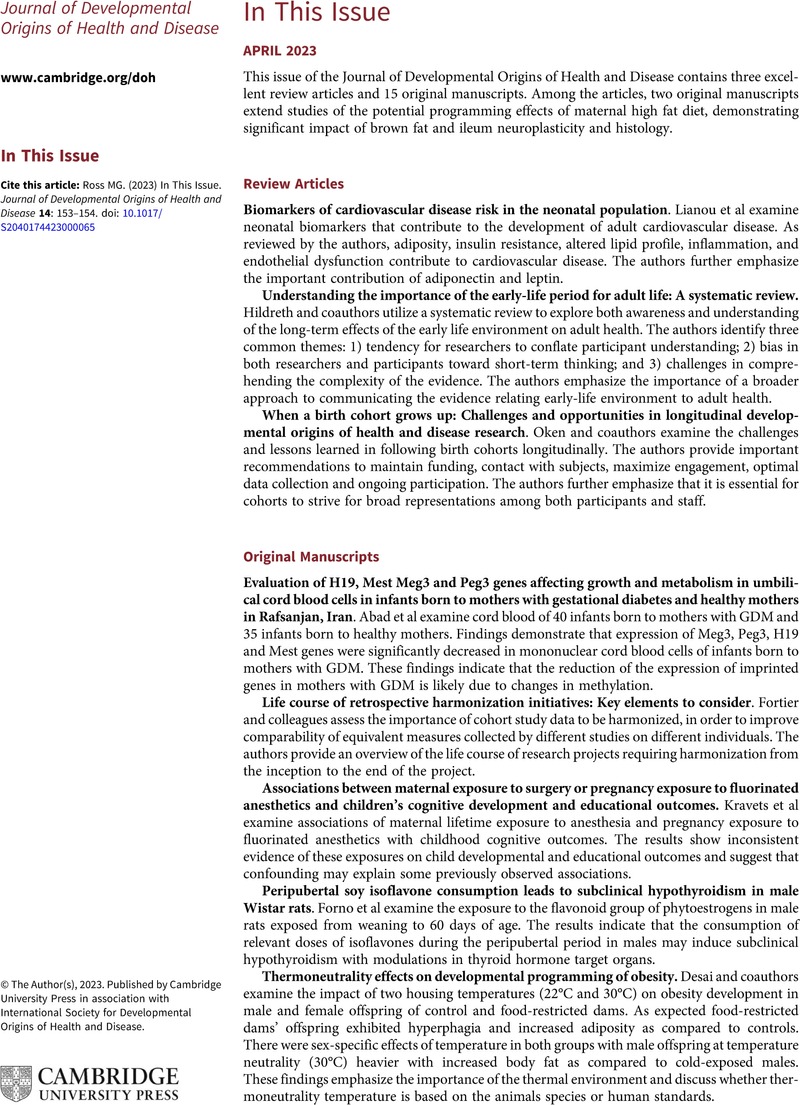No CrossRef data available.
Article contents
Abstract
An abstract is not available for this content so a preview has been provided. Please use the Get access link above for information on how to access this content.

- Type
- In This Issue
- Information
- Journal of Developmental Origins of Health and Disease , Volume 14 , Issue 2 , April 2023 , pp. 153 - 154
- Copyright
- © The Author(s), 2023. Published by Cambridge University Press in association with International Society for Developmental Origins of Health and Disease



